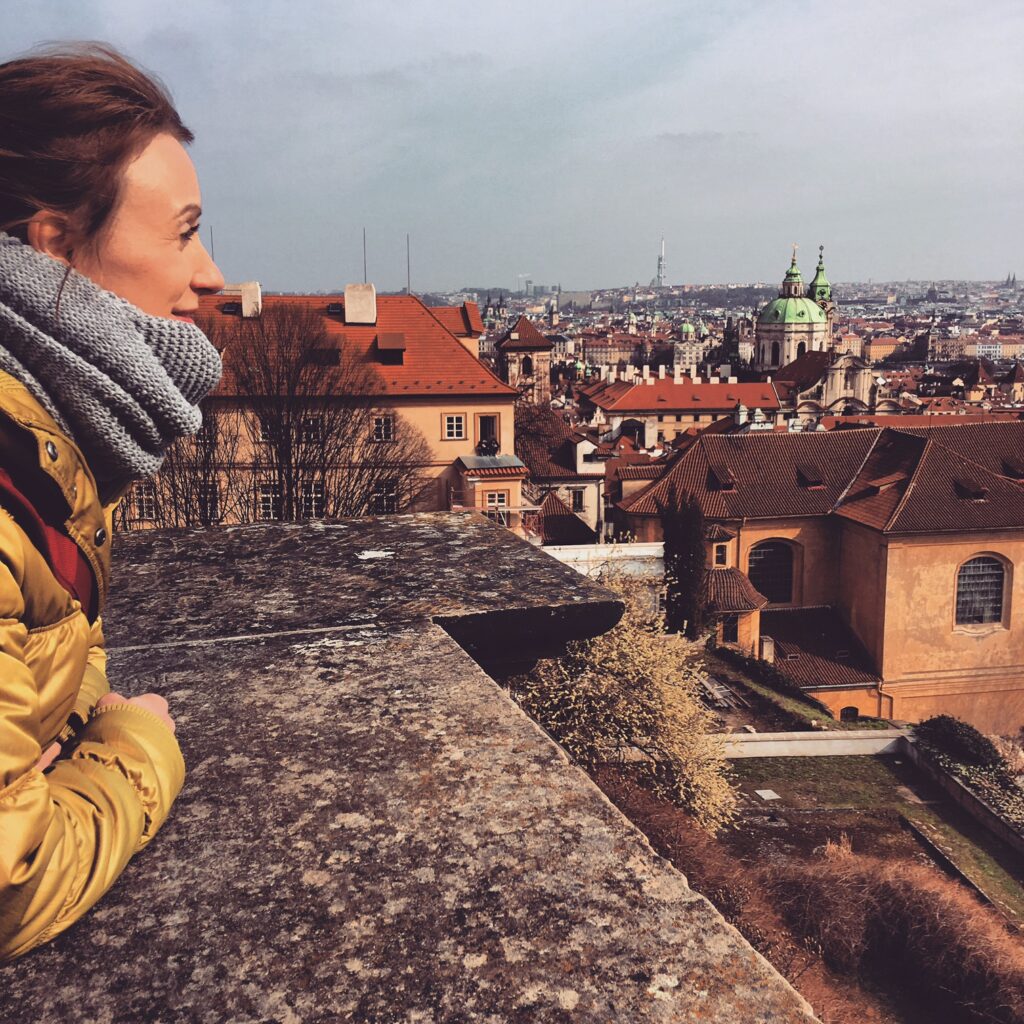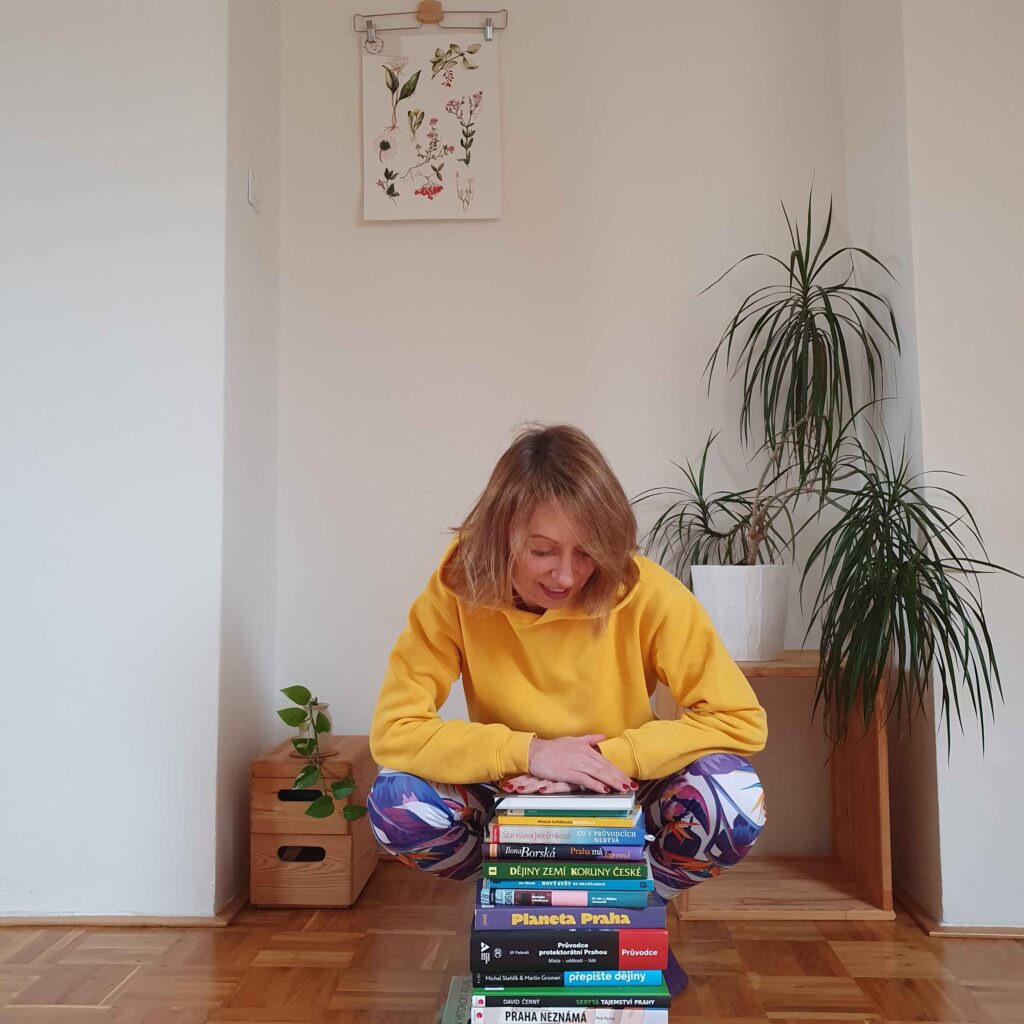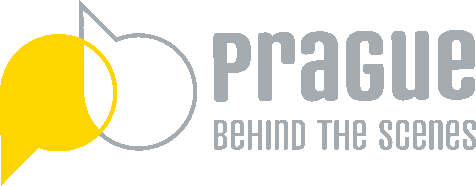Communism in Czechoslovakia. Important chapter of our long, impressive history. Unfortunately another one with not very positive content. Many of my clients ask me on the tours about communism. And I am glad for that! But how to squeeze 41 years of communism in only a few hour tour?! I was racking my brains. How to sum up this complicated topic in a more articulate form? With focus on the fundamental moments and important facts. This is the result. This blog post will teach you a bit more about communism in Czechoslovakia. In a comprehensible and hopefully interesting way.
And who is writing this blog for you? My name is Dana. And as you have seen in the upper paragraph, I am working as a tour guide in Prague. I am running my tiny business called Prague Behind The Scenes – designing small-group and private walking tours of Prague downwtown. And supporting sustainable and responsible tourism, no mass tourism. Please don´t hesitate to contact me with questions or tour requests dana@praguebehindthescenes.com

Communism in Czechoslovakia: when it all started and why?
Let me take you several decades back. We will stop in a year 1946. One year after the end of WW2. This was a year when Communist party won the elections. The last free parliamentary elections held in Czechoslovakia until the end of communist regime. Yes, free election didn´t exist during the communism. It wasn´t mandatory to vote, but if you didn´t show up, you were in trouble. They strictly controled that. And of course, you could only choose from one party. Guess which one. In the polling room you were given the communist party ballot and in front of the observers you had to put it in the ballot box. No privacy, no other choice. Yes to communism by 99.9% of voters. You had to vote for them even if you didn´t want. Humiliation, absurdity.
How come the communists won the elections?
They got 40 % of the votes. With this result they won the elections and got all the key ministries under their full control. And started to place agents in the government structures. Two years later they changed the winery into a dictatorship that lasted 41 years. But the question is: how could they win? Communists basically misused the post-war atmosphere in Czechoslovakia. People were excited and motivated about building a new and better future. All together. Share things, work together, equally. Leftist ideals were inspiring for many Czechoslovaks and that’s how communists lured people. They also liked to present themself as peacemakers and peacekeepers (powerful and resonating words in the post-war era). And of course the Soviet Union had a pretty good reputation in Czechoslovakia. As one of our liberators at the end of WW2. While the West was still seen as betrayer. Why betrayer? Because of the Munich Agreement, sometimes also called Munich Betrayal – when Great Britain, Italy and France agreed with anexation of Czech Sudetenlands by Nazi Germany. They thought this would stop Hitler from starting a bigger international war conflict. But we know how this all ended. Policy of appeasement (policy of concessions) doesn ‘t work.
1948: Takeover of the power by communists
The spreading influence of communists, unbearable pressure on democratic opposition and democratic president resulted in full takeover of the country by communists. This was in February 1948. How? It was all well prepared and controlled by Stalin from Moscow. He was threatening and pushing on the Czechoslovak communist party to finally take over the regime here. He didn´t need friends and allies in Czechoslovakia, he wanted full and brutal control over us. Stalin also blocked our chances to participate in the Marshall Plan negotiations (Marshall Plan was a post-war recovery programme initiated and funded by the USA). This would help our country immensely. But Stalin was afraid of the economical interventions of the West and losing his control over us. Communist were ready for the coup, they even formed absolutely bizarre, scary and agressive armed units of civilians called “militias’ (armed fist of the working people). Individuals, usually not very educated who got guns and power. They often helped in repressing opponents or demonstrants. By massacring them. On February 25 we officially got behind the Iron Curtain, became a satelite country of USSR and communism in Czechoslovakia finally revealed its real face.
How was life in communist Czechoslovakia?
Lives of people were fully under control of the communist party. There was no freedom. People were facing show trials, purges, many families broke up, friendships ended when people emigrated. Properties and businesses of people were nationalized. Intelectual elites were struggling. They were often not allowed to work in their fields or in positions they were qualified for. Just like the Czech inventor of soft contact lenses, prof. Otto Wichterle. Did you know that contact lenses were invented in Czechoslovakia? With a help of children’s mechanical construction set called Merkur because prof. Wichterle wasn´t allowed to work on this invention in a regular laboratory.
The working class of uneducated people was in charge. Communists were afraid of educated people. Did you know there is a bridge in Prague nicknamed “Bridge of Intelligentsia”? This bridge was built by all the educated people who were fired from their positions (lawyers, priests, doctors, philosophers…). There were thousands of imprisoned opponents of the regime. Priests and monks were expelled from churches or monasteries and sent to working camps. Or to prisons where many of them were tortured and died.
Omnipresent censorship, limited access to quality culture, closed borders. That was every day reality in the communist Czechoslovakia. We got stuck in time. No development. Besides that, shops were not supplied well as the economy was “centrally planned”. They basically planned everything 5 years ahead: designs, amounts, prices…that´s why there was often a shortage of certain products and line ups. For example for toilet tissues (yes, sometimes we used old newspapers instead), nylons, eyelets for curtains, menstrual supplies (women made their own at home, filled with cotton wool) but on the other hand we really had lot of steel. Steel for breakfast, steel for lunch, steel for dinner! Did you want a car or washing machine during the communism? You had to join a waiting list, register and maybe…one day…in several years… you could drive your own car.
1968: Socialism with a human face and a glipse of freedom
Very important year in our communist history came in 1968. This was a year of big hopes but also big dissappointment in the end. A new president was elected and believe it or not, his name was Svoboda which means freedom in English! There were also new, progressive leaders of the Communist party who came up with a number of surprisingly meaningful reforms. Their goal was to create something what we call “socialism with human face”. During this short period of certain liberalization in Czechoslovakia people could finally experience more freedoms, censorship was abolished, Czechoslovak citizens could travel again and many other positive changes. That was a shocking twist and all the reforms were greatfully accepted by public. Yes, we were still part of the Eastern Block and communist country but the life of people got better and more optimistic. At least for several months. This period we call Prague Spring because most of the changes happened during the spring time of 1968.
1968: Invasion to Czechoslovakia led by USSR army
All the turbulent changes were absolutely unaccepted by USSR. Such a rebelion in the Eastern Block! But soviets quickly came up with very agressive solution as they were seriously afraid of counter-revolution in Czechoslovakia. Czechoslovakia was invaded by Warsaw pact army on August 21, 1968 when thousands of soldiers from USSR, Hungary, Poland, East Germany and Bulgaria crossed our borders. At night when everybody was sleeping. Czechoslovaks woke up into a very sad morning. There were tanks and soldiers in the streets. In total 750 000 soldiers arrived to control the situation. Communist leaders of the “reform” wing were arrested and transported to Moscow where they had to sign a “Moscow Protocol”. By signing it they refused all the Prague Spring reforms and expressed consent with the invation (Soviets called it “fraternal help”). And this was the end of one nice dream. Backbone of the nation was broken. We were back in the locked cage. For the next 21 years. And the troops? 75 000 soldiers stayed here to patrol our obedience. The last soldiers left Czechoslovakia in 1991.
80´s: Communism in Czechoslovakia is slowly dying
In the second half of the 80´s the political opponents in Czechoslovakia became more active. while the communist leaders were active less. By force of habit they were managing the country without knowing where they were going. Czechoslovakia was experiencing a huge economic decline. Another shock for Czechoslovak communists were all the progressive reforms initiated by the new USSR president Gorbačev. Czechoslovakia was suddenly without strict surveillance, without instructions from the Moscow. Czechoslovak people were openly complaining about the economical situation. They also had better access to information from the West where they could see the depressive contrast between quality of life here and behind the iron curtain. Since the very beginning of 1989, the demonstrations became more common especially in big cities. Things started to move from below, even the lowest class of the labourers started to speak up and present their dissatisfaction with the regime.
1989: Velvet revolution, real freedom and the new beginnings!
Velvet Revolution started on November 17, 1989 (International Students Day) as a peaceful gathering of students commemorating 50th anniversary of violent act of Nazis against Czech students in 1939. Later in the day, the 1989 gathering turned into a political demonstration against the government. This was just 8 days after the fall of the Berlin wall! Emotions, high hopes…Czech students led their procession downtown on Národní street. They even got a permission for that! But it was a tricky trap. Police and militias got ready for them. On Národní street they brutally beat them up with batons. Fortunately it was the last violent act. This in fact was the real beginning of the Velvet Revolution as from November 17 the wave of massive protests and strikes had started – as a follow-up to seeing this brutal act against unarmed students. Two days later the Civic Forum was founded (OF). This initiative was formed of a group of dissidents who became an official voice of protesters and unsatisfied public. Civic Forum also led all the following negotiations with communist officials. It only took 11 days until communists gave it up. This was the happiest Christmas in the long history of Czechoslovakia. Later, on December 29 the first democratic president Václav Havel was elected and a new, optimistic chapter of our history just started. After 41 years of communism in the Czechoslovakia we became democratic country again.
Dana, owner and guide for Prague Behind The Scenes | small-group tours and experiences.
Please feel free to contact me if you have any questions or want to tour with me: dana@praguebehindthescenes.com

Where to next?
Dana´s small-group tours of Prague downtown.
Where to stay in Prague: 5 tips for hotel locations, sightseeing and friendly downtown neighborhoods
How to get from / to Prague airport? 3 easy ways for every budget.
Easy trip from Prague: Nelahozeves, hidden gem of Czech countryside only 40 minutes from Prague!
Everything about Prague public transport: prices, tickets, hints and recommendations from a local.
5 original Czech drinks you have never heard about: what is BMW, mushroom or concrete?
